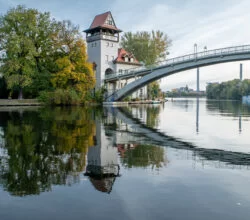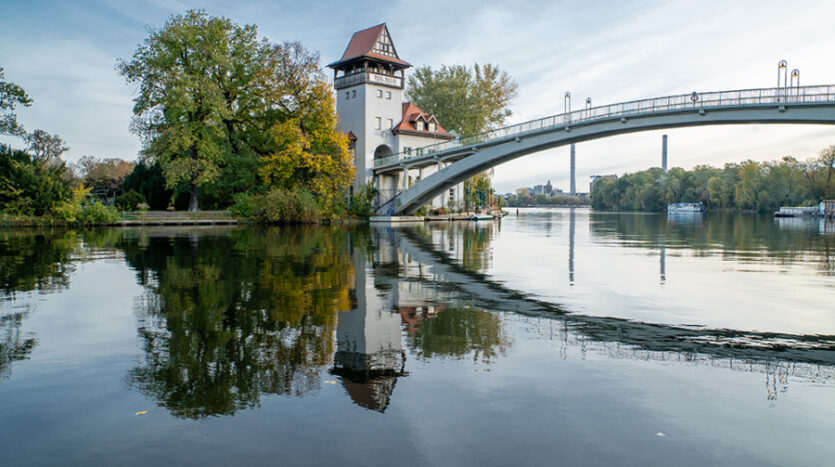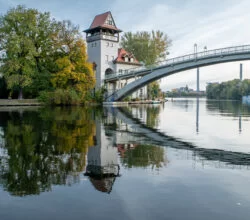Treptow – Köpenick
- Home
- Neighborhoods in Berlin
- Treptow – Köpenick
Treptow – Köpenick

With research institutes, high-tech firms and media companies, there’s no lack of jobs in Treptow Kopenick, or in the immediate surrounding area in the logistics and transport sectors. The district also offers good transport connections to the centre of Berlin, and plenty of natural spaces.
Treptow-Köpenick is both: the 31-storey office building (the tallest in Berlin) on one side of the Elsenbrücke bridge, and Müggelsee lake on the other, which, with an area of 7.4 square kilometres, is the biggest lake in the capital. Between the two there is much variety. For example, the subdistricts closer to the centre. Such as Alt- Treptow and Oberschöneweide, are now being transformed from industrial areas into service sector locations. . A centre for sicence, business and media measuring 4.6 square kilometres has been built in the Adlershof subdistrict. This site is now home to six natural-science institutes of the Humboldt University of Berlin. And eight non- university-affiliated science institutes and 553 high-tech firms and media companies. More than 22,000 people work here and 6,400 study here. This environment has also led to the development of several new neighbourhoods over the last few years, complete with shops, hotels and restaurants.
Treptow Kopenick
There’s still space for further residential development in Treptow-Köpenick. The district accounts for nearly 19 per cent of Berlin’s total area, far more than any other district. At the same time, only a little more than seven per cent of Berlin’s population lives in Treptow-Köpenick. There are plenty of green spaces and forests between the River Spree and the River Dahme. Köpenick is located where the two rivers meet. Köpenick is known as a “city on water”, and its varied historical buildings are protected as listed properties. In addition, the old city plan for Köpenick is now considered a standard for urban planning.
During the second half of the 19th century, three suburb-like communities developed outside of the old town in Köpenick. And these new communities add additional facets to an overall appearance. That is otherwise marked by listed industrial sites and villa neighbourhoods. The mixture of residential housing, shops, service companies, restaurants, and administrative facilities. In addition to cultural venues lends Köpenick a provincial feel and charm.
TREPTOW KOPENICK
The district as a whole, and especially its more remote subdistricts, benefit from good transport connections, as S-Bahn trains and regional trains link it to the centre of Berlin and the airport. The A113 motorway that passes BER Airport and links up with the Berlin motorway ring road is also not far away. What’s more, to the east of the motorway ring road, Tesla has built its “gigafactory”, which will create even more new jobs and is expected to attract other companies to the area as well.
Many new jobs have been created in Treptow-Köpenick in the last few years, and more will follow, as is also the case in the areas just outside of the district border like Schönefeld or Grünheide, which will also benefit Treptow-Köpenick.
Interested in investing in Dubai real estate? Connect with real estate professionals for complete Dubai property related information. Visit our website!


